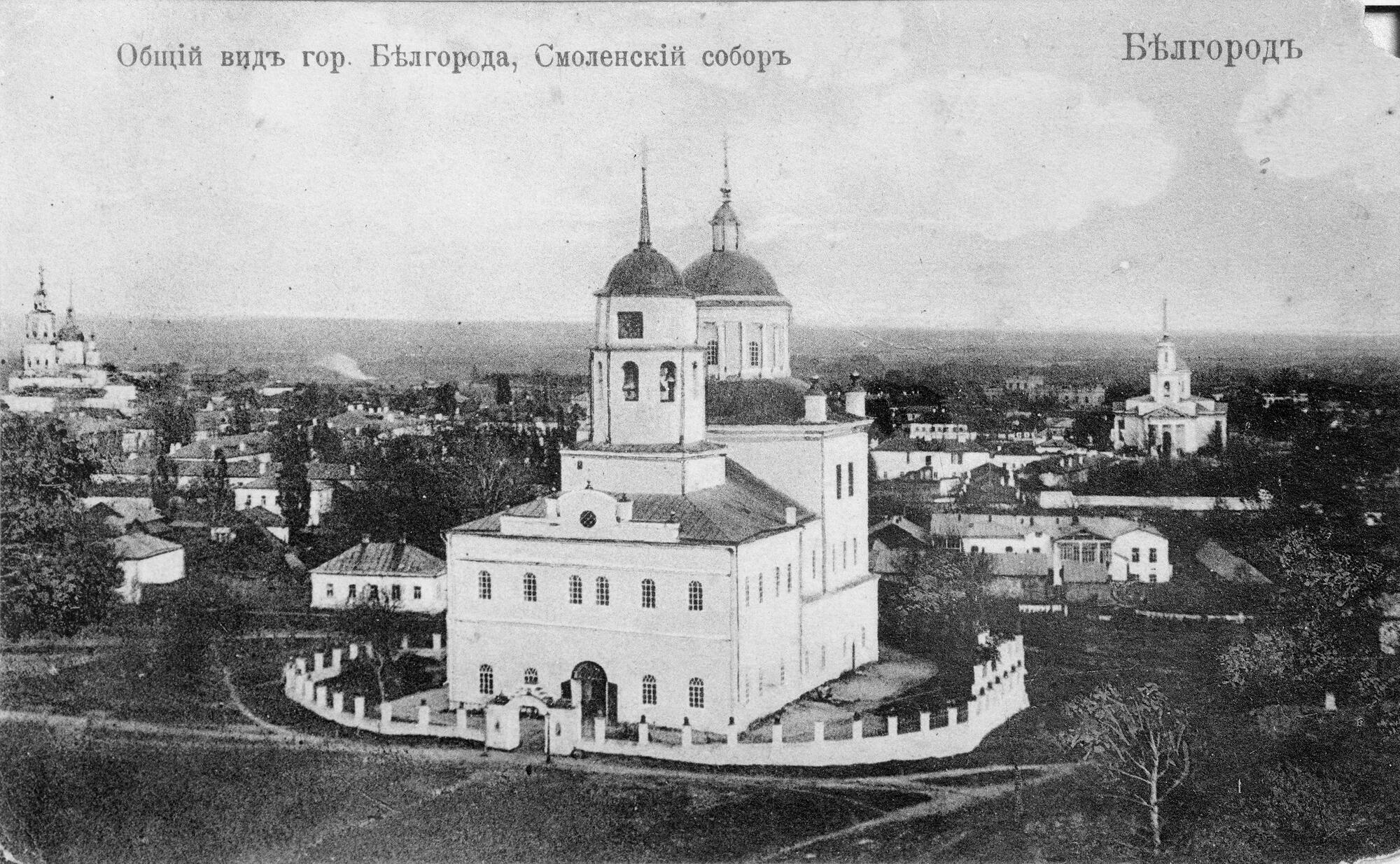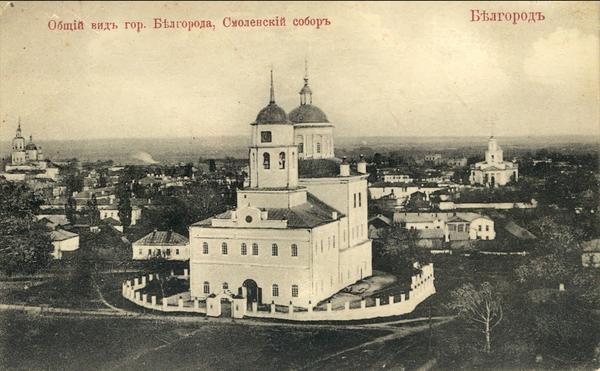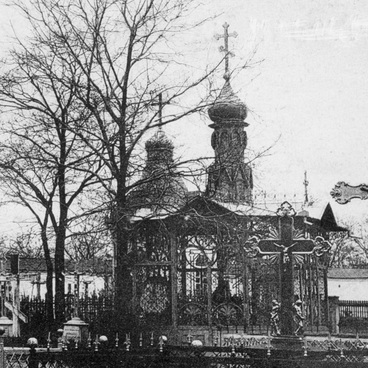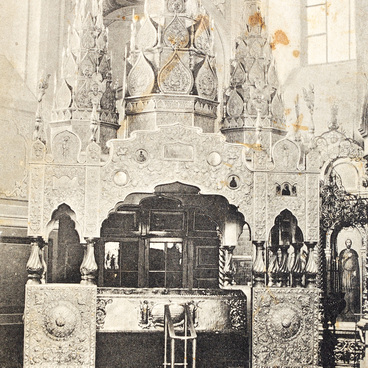The history of the Smolensk Cathedral in Belgorod is associated with a miracle worked by the icon of Our Lady of Smolensk.
In the 17th century, a pious Belgorodite named Semizorov made a vow to put the case with this icon, decorated with a silver revetment, on the Eastern Gate of the city fortress. Once put above the gate, the icon remained there for a long time, and on the night of October 2, 1703, a miraculous glow began to emanate from it. The guard Methodius Ivanov noticed the light and in the morning told about the sign he had seen. Following the sign, a chapel was erected on the site, and two years later, a church named after Our Lady of Smolensk.
In 1727, Archbishop Peter of Belgorod gave his blessing to replace the dilapidated wooden church with a two-story stone one. In 1743, the lower altar was consecrated in the name of Our Lady of Smolensk (Hodegetria), and in 1763 the upper altar was consecrated in honor of the supreme apostles Peter and Paul.
In 1825, with the funds donated by the merchant Mikhail Konstantinovich Machurin, the upper altar was decorated with marble. Soon a third altar arose — the one in the name of Archangel Michael. The church was designed and built in the architectural traditions of Sloboda Ukraine in the late 17th century.
During the reconstructions of the 19th century (in 1859 and 1862), the appearance of the building changed greatly. As a result of the former reconstruction, magnificent baroque platbands, cornices, and portals were hidden under layers of plaster. Upon the latter one (according to the “Highly Approved Project”), a new western extension was set up, the octagon was given the shape of a rotunda, and resonators were installed in the vaults.
In the 1920s, the church was plundered; warehouses were arranged on its premises, but parishioners continued to come there to pray. In 1936, the Church of Our Lady of Smolensk, like many other churches in the city, was closed. After that, the church was on the brink of peril three times: it barely survived under shelling in 1943 and was almost blown up in 1958 and 1974 (when it was “saved” by the proximity of a school damaged by bricks that fell during a test explosion).
The church was almost in ruins, yet it survived. In the 1980s, there were plans to arrange a hall for organ music concerts in it; the building was renovated, and in 1996 it was finally returned to the diocese. The consecration of the newly found Church of Our Lady of Smolensk was conducted by Bishop Ioann of Belgorod and Stary Oskol. Today, the cathedral is fully functional and is under protection as an architectural monument of federal significance.
In the 17th century, a pious Belgorodite named Semizorov made a vow to put the case with this icon, decorated with a silver revetment, on the Eastern Gate of the city fortress. Once put above the gate, the icon remained there for a long time, and on the night of October 2, 1703, a miraculous glow began to emanate from it. The guard Methodius Ivanov noticed the light and in the morning told about the sign he had seen. Following the sign, a chapel was erected on the site, and two years later, a church named after Our Lady of Smolensk.
In 1727, Archbishop Peter of Belgorod gave his blessing to replace the dilapidated wooden church with a two-story stone one. In 1743, the lower altar was consecrated in the name of Our Lady of Smolensk (Hodegetria), and in 1763 the upper altar was consecrated in honor of the supreme apostles Peter and Paul.
In 1825, with the funds donated by the merchant Mikhail Konstantinovich Machurin, the upper altar was decorated with marble. Soon a third altar arose — the one in the name of Archangel Michael. The church was designed and built in the architectural traditions of Sloboda Ukraine in the late 17th century.
During the reconstructions of the 19th century (in 1859 and 1862), the appearance of the building changed greatly. As a result of the former reconstruction, magnificent baroque platbands, cornices, and portals were hidden under layers of plaster. Upon the latter one (according to the “Highly Approved Project”), a new western extension was set up, the octagon was given the shape of a rotunda, and resonators were installed in the vaults.
In the 1920s, the church was plundered; warehouses were arranged on its premises, but parishioners continued to come there to pray. In 1936, the Church of Our Lady of Smolensk, like many other churches in the city, was closed. After that, the church was on the brink of peril three times: it barely survived under shelling in 1943 and was almost blown up in 1958 and 1974 (when it was “saved” by the proximity of a school damaged by bricks that fell during a test explosion).
The church was almost in ruins, yet it survived. In the 1980s, there were plans to arrange a hall for organ music concerts in it; the building was renovated, and in 1996 it was finally returned to the diocese. The consecration of the newly found Church of Our Lady of Smolensk was conducted by Bishop Ioann of Belgorod and Stary Oskol. Today, the cathedral is fully functional and is under protection as an architectural monument of federal significance.



